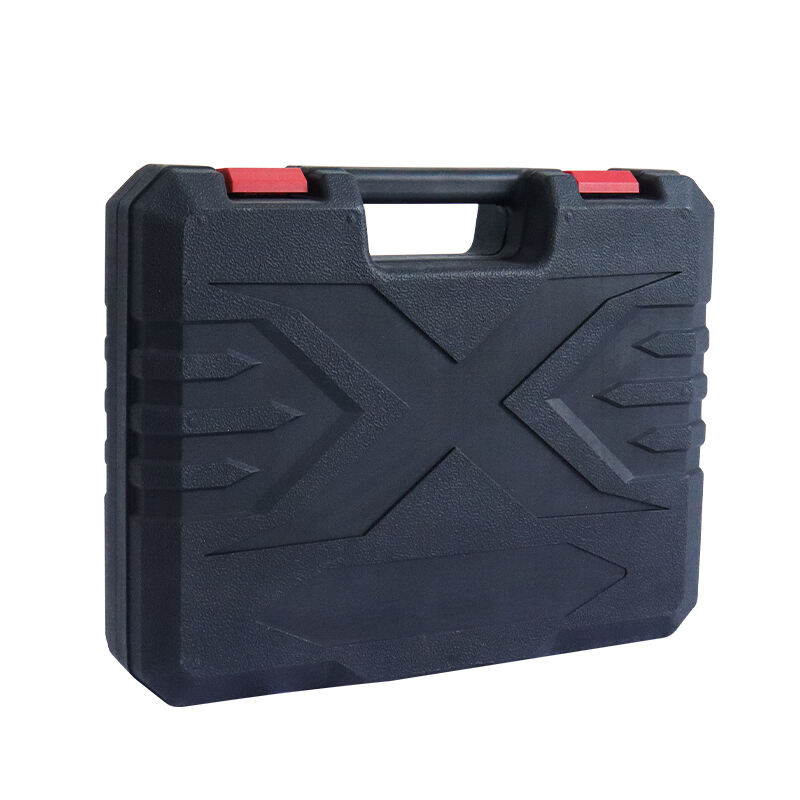Introduction
In all kinds of industries, where they are used for cutting, grinding, cleaning, and polishing things -angle grinders are indispensable tools. Generally, people have chosen corded angle grinders for their constant power output. However, the emergence of cordless angle grinders has seen something of a change this year--with increased mobility and flexibility. This article explores whether cordless angle grinders can truly perform as well or better than their corded cousins in industrial applications.
Power Output and Performance in Angle Grinders
Power output is a critical factor in industrial applications. Coded grinders, by the variable act of transferring power to machinery after issue of an order (as it were), give greater power and better performance. As lithium-ion batteries advance, however, the lifetime of cordless grinders has been improving along with power output. Battery life is a concern- especially in the case of long hours or continual use on heavy-duty manufacturing equipment. In the worst scenario, frequent recharge or maintenance of multiple batteries can be the only remedy.
Portability and Flexibility
Whereas a cordless angle grinder has no power cord to tie the user down, it signifies unparalleled portability and freedom of movement. In huge industrialized sectors this is particularly advantageous, as workers can walk all over a job site as required--with the only constraint being their own two feet. Without worrying about electric outlets, which may not be easy-to access for some locations in order to recharge one's work circle equipment at night (for example), there is no need either. With cordless-angle grinders it is much easier to work in and out tight spaces or around dangerous or sensitive locations
Battery Technology and Duration of Service
With the invention of lithium-ion batteries, the service life of cordless angle grinders has been significant. Manufacturing plants where machine life is cf on hrs at an of TiJrTcJenq must be turned off are the worst cases. They already offer some quick-charging options and batteries with large capacity But these are going to cost consumers a great deal more. The future development of battery technology will be key for cordless grinders to match corded models' lifetime.
Durability and Reliability in the Long Run
In industrial settings durability is important. Industrial tools are often heavily used and require sturdy construction to last. Cordless angle grinders must be able to withstand the day-to-day grind of industrial use, so they should be made out of tough stuff and have dependable components. However, while many cordless models have now met those standards, their long-term reliability remains a question of concern for some people working in continuous industrial services. Regular maintenance is needed to make the longevity of both corded and cordless angle grinders and replace worn parts.
Safety Features and Industrial Standards
Safety comes first in industrial usage. Both corded and cordless angle grinders have safety features such as lock-on buttons, two hands gripping handles for greater accuracy/maneuverability, and a debris discharge system to protect users from dust. It is imperative that all angle grinders meet industrial safety standards and are inspected and maintained regularly to prevent accidents. The change from corded to cordless models should not mean sacrificing safety, and cordless grinders should be used only by those who are trained how to operate them properly.
Cost-Effectiveness Analysis
At first glance, the expense for cordless angle grinders is high because of costs of batteries and chargers. However, not having to supply continuous power and increasing productivity through greater mobility may outweigh these expenditures. A cost-effectiveness analysis should be based on comparing total ownership costs including one-off costs, battery replacement charges and maintenance fees throughout the life expectancy of the tool.
Case Studies and Practical Experiences
The application of the Cordless Angle Grinder and Real World Exploration Real-world empirical experience has shown that cordless angle grinders can be effectively used to replace corded models in many industrial applications.Success of this transition rests on the specific demands of the work in question, available infrastructure for charging batteries to power tools Lighting the spark plug, and Home use can manage battery life effectively. The feedback of practitioners in the field reveals the advantages of cordless mills are mobility and flexibility. But these people also stress that one must plug into a stable source of power as insurance against power outages, so it is important to organize an adequate supply strategy.
Conclusion
The flexibility and portability of cordless grinders can mean increased productivity and happier workers whether in factories or on construction sites. However battery life management and the necessity for an infrastructure which charges reliably present two major problems yet to be resolved. With battery technology advancements, that gap may close even further in the future. As a result, cordless angle grinders are increasingly becoming a better option for industrial use.

